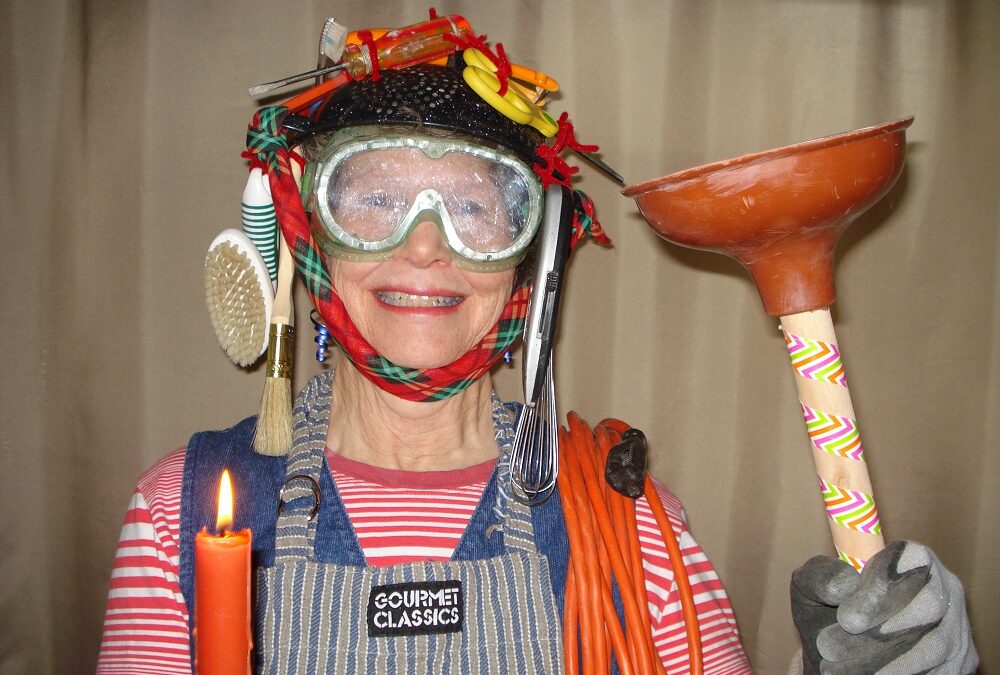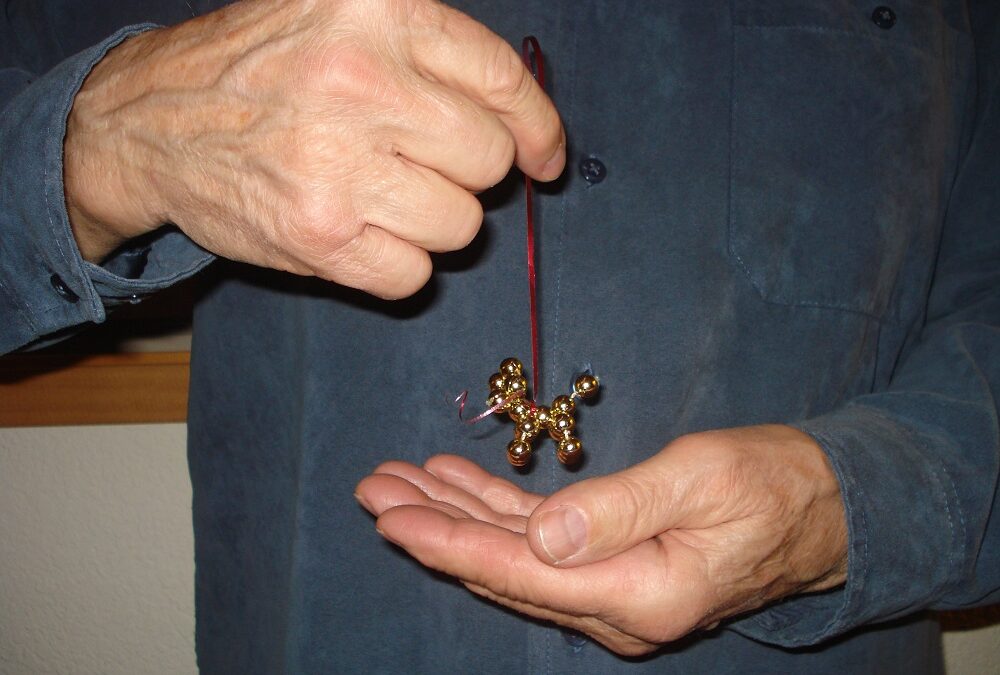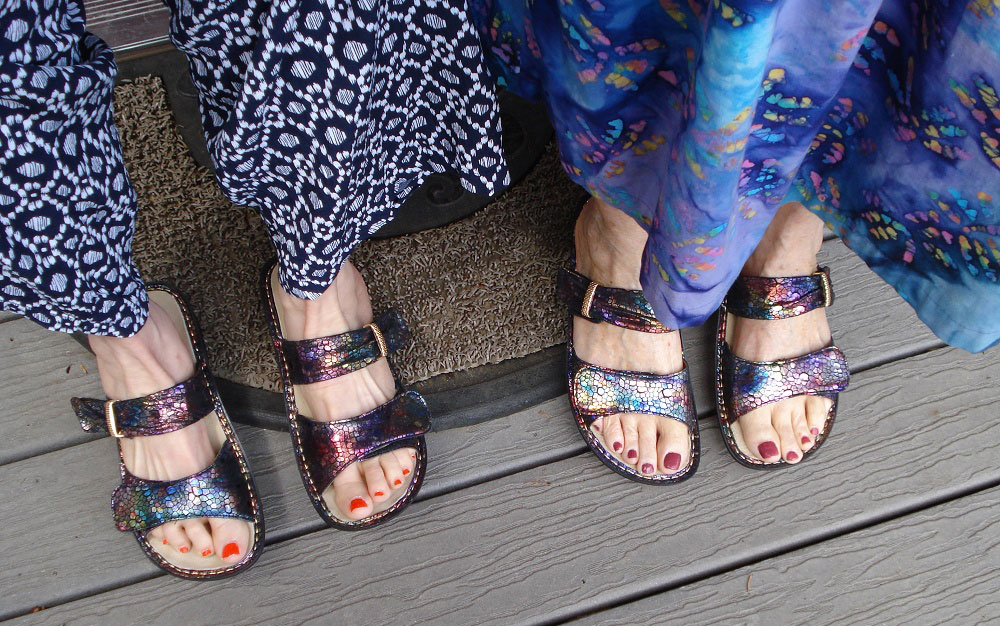
by wp-admin | Dec 9, 2021 | Exploring the Mental Fitness Formula
Do you often feel like the only place you can find peace is one like this? People offer innumerable triggers for fight-or-flight reactions. While it’s wonderful to retreat to such an inspiring spot, it’s possible to be at peace, even when you’re with other people. Your Adult can learn to recognize another Child Brain Habit, Personalizing, that causes confusion when people interact. Like black & white thinking, its influence operates in more than one direction.
Personalizing is probably the main reason that human nature has a bad reputation. It’s so prevalent, it could be seen as humans’ default mode of reacting. It occurs when you blame yourself for negative things that happen to you, that were not in your control. It also occurs when you blame others for negative things that were out of their control. Sometimes we call this “taking things too personally.” Personalizing is a habit that increases fight-or-flight reactions in cases where at least four Toxic Beliefs are triggered.
1) Toxic Belief # 1, when you blame yourself.
After “Janet” and her husband divorced, she sought counseling for their three-year-old son “Winston.” He had come to her one morning and sadly commented, “I’m going to go away in an airplane.” She asked him why and he said, “then Mommy won’t cry and Daddy won’t cry.” He had personalized the cause of their pain. Heartbroken, she tried to assure him that the divorce wasn’t his fault, but he didn’t believe her and continued to be anxious and sad.
Winston’s mother and I struggled to find a way we could reach his three-year-old mind and relieve his guilt. Finally we remembered that Janet’s sister Elaine had a baby six months ago that Winston adored. We helped Winston imagine a time before he was born, by reminding him of when his little cousin was still in Elaine’s tummy. Once he got that, Janet told him, “even before you were in my tummy, Mommy was crying and Daddy was crying.” Winston responded immediately, like a huge weight had dropped from his shoulders.
Although Janet said she and her husband had an amicable divorce and had not fought over Winston, he still felt responsible. Very young children believe the world revolves around them; the baby cries and the parent comes. Belief #1 is true for young children, who actually do need the support and love of a parental figure to survive. Because of this, they need to be well- attuned to their parents’ feelings, as Winston was. By adulthood we could realize that we have little power to protect others from painful experiences, except for doing our best to treat them with kindness. Unfortunately, we don’t lose our original bias towards personalizing what others do. Wise parents help their children learn to manage this as Janet did with Winston.
Personalizing can especially stoke your fight-or-flight reaction to Belief #1 when someone you rely on seems to withhold her approval, attention, support or acceptance. Once you’re an adult it’s not true that you must have the approval and support of one or more significant people. To have peace your Adult must revise Belief #1 and remind your Parent and Child parts that, when you don’t receive this, you may be very disappointed, but your life is not threatened. It’s rarely all about you and you actually can stand it.
A phrase I coined to help me when I struggle with feelings of responsibility in times of others’ distress, whether they blame me or not, is: When you don’t have the power, you can’t have the responsibility. Another phrase that a client created to keep her from taking on other’s problems is somebody has a problem here, but it’s not me. As the oldest child in my family, I was often pressed to feel and take responsibility when my mentally- ill mother created painful situations for any of us. This became deeply embedded in my toxic beliefs and continues to affect me, especially in close relationships. These phrases offer my Adult a quick reminder of how I’ve revised Belief # 1. If I couldn’t avoid personalizing and hadn’t revised this belief, my ability to have close relationships would have been very limited.
2) Toxic Belief #3, when you blame others.
Personalization intensifies fight-or-flight responses when Belief # 3 is triggered. You may become furious with another person because you jump to the conclusion that his offensive behavior is deliberately aimed at you. To calm yourself, your Adult must begin with recognizing that you may have taken his behavior too personally. Once your Adult recognizes this, it will be able to revise Belief #3, that people whose behavior doesn’t meet your standards should be blamed and punished. I like my client’s phrase for this one too: their behavior is rarely my problem, but it will certainly cause them distress in the long run.
In any case, it’s best for your Adult to do a reality check to find out, when possible, what has actually been the thinking of the offending person. Often you’ll find that they hadn’t meant to target you at all. If they were just careless and recognize it, they may apologize. If they were angry with you and tell you why, you might even decide you owe them an apology.
It’s really possible to “keep the air clear” between you and one or two other people at a time, simply by using your words to ask “I’m confused about what was going on with you when you……?” To undertake this you may need to hold back a very strong sense that they did mean you harm, and most often you’ll have to overcome anger and anxiety. Each time I’ve made myself do this, I’ve felt these things, but it got easier the more I did it. I discovered how often Personalization can interfere to make you believe others are focused on you when they are not.

by wp-admin | Dec 9, 2021 | Exploring the Mental Fitness Formula
This little stone family invites you to take a big leap into wiser Adult coping. You can’t guess what these rock people’s brains might be like, can you? How would you cope with a co-worker who looked like these one-eyed stones? You could suspend a few toxic beliefs for a while. Would you get upset if he didn’t approve of something you did? Would you compare your performance to his? Would you blame him or yourself if you had communication or cooperation problems?
Many toxic beliefs assume that we humans all share similar capabilities. Improved brain imaging techniques are revealing how different human brains actually can be. It’s your Adult’s job to read situations accurately, taking brain differences into account, as you interact with others. How might your own brain differ in some ways that make it harder or easier for your Adult? Everyone’s Adult must manage toxic beliefs, Child ranting and archaic brain habits like black-and-white thinking to reduce fight-or-flight reactions. But for many people it’s more difficult, or even impossible for them to do all this reliably.
These people are wired to have more overwhelming fight-or-flight challenges. If you’re in this group you may react more intensely and quickly than most people. You may have more trouble getting your Adult to focus or observe your inner being. You may not be able to interpret what’s happening in a situation. You may not be able to remember what others say or what you’ve just read. You may not be able to guess from another person’s body language and tone of voice how they’re feeling. These problems interfere with Adult self-management, no matter how hard a person tries to master mental fitness skills. Your Adult needs to recognize this to keep you out of frequent, defensive fight-or-flight. It must also realize that others may need compassion when their behavior is difficult. They may be doing the best that they can.
People don’t have to look like one-eyed stones to deserve a thoughtful, Adult approach. Belief #3, that people (including you) who don’t meet a set standard should be blamed or punished, is not helpful for this. An ADHD child who disrupts a classroom requires extra guidance and perhaps medication. Criticizing his parents and punishing him just arouses their fight-or-flight reactions, which interfere with their Adult problem-solving abilities. When we’re angry with others, our own Adult abilities suffer as well. Whether it’s a boss who feels compelled to micro-manage her team or an engineer who irritates those around him with his lack of sensitivity, Adult problem-solving is required for solutions. Blaming people who can’t regulate themselves is understandable, but managing them to protect others and the productivity of a group is more humane and helpful.
Part II, Chapter 1 of my book offers an overview of the most common brain differences that make it harder to keep your Adult in charge, along with references for further study. These differences include Elaine Aron’s Highly Sensitive Person trait, described with a self-test at her website, www.hsperson.com, Attention Deficit Disorder (ADD), including associated hyperactivity and learning disabilities, Borderline, Schizoid, Anti-social and related personality disorders, Bipolar Disorder and autism spectrum disorders. Future posts will discuss examples of how some of these operate to make fight-or-flight harder to manage.

by wp-admin | Dec 9, 2021 | Exploring the Mental Fitness Formula
To protect yourself from hurt and anger over any brain differences that make it harder for your Adult, you must build shelter into your Wise Parent. You can extend it to others as well. As noted in Post # 16, there are several wired-in conditions that can make you feel like you’ll never fit in to our overwhelming life here on planet earth. The old philosopher’s advice, “Know thyself,” has lots of resonance here.
As an example I’ll share how I’ve worked to manage and accept my very high level of Elaine Aron’s Sensory Processing Sensitivity Trait,*which I’ve always had to work hard to manage. When I read her first book, The Highly Sensitive Person, in 1997, I recognized many aspects of myself in her pages about HSPs. When I finished it, I said to myself, “another fitting title would be, ‘The Highly Irritable and Cranky Person.’” I could recall, as early as age ten, struggling to be calmer, less quickly annoyed, and less judgmental with others than came easily to me. I didn’t want to be like my angry, intolerant mother, who was no-doubt also an HSP, along with her other, more painful problems.
When I could walk on the beach or spend quiet time with a friend or two, I was very peaceful. I even began to write poetry about the beautiful Indiana Dunes where I lived. HSPs tend to have a special appreciation for nature and beauty; it helps compensate for our more tiresome traits. You’ll notice that the picture above features the same family as the one in post #16, but the stone people now have a sheltering branch to comfort them. When we HSPs and others with other challenging brain differences identify how our brains operate, our Adult must seek environments where we can thrive.
Our Wise Parent must revise Critical Parent messages that if we don’t fit in, we’re failing socially or in our jobs. It must also revise Indulgent Parent messages that would have us withdraw in self-pity and greatly limit our lives and happiness. No, we can’t expect others to recognize on their own that we can’t always handle what they can in a situation. Anyone who goes to an intense movie with me for the first time, gets to listen to why I had to leave in the middle to regroup and calm myself.
My friends accept this about me; I must accept that some people will fault me for it, because they can’t understand it. Then I must provide an internal sheltering branch, to feel good about myself anyway. A client I knew who had Attention Deficit Disorder, but whose wife was constantly angry with his slip-ups, told me that when he learned he had ADD, “I realized I wasn’t an asshole, I just had ADD.” He worked hard to compensate, but he learned to do this too late for his wife.
We HSP’s can be anything but sensitive to others if we don’t find the sheltering branches we need to help keep us out of fight-or-flight. We can be highly irritable and cranky if we’re over-tired, badly nourished, overwhelmed by noise, scents or light. I’ve always had to remove the tags in the necks of my clothes. We need stronger-than-average Adults to cope well socially, to ensure that, in my words “we’re fit for human habitation.” Because we’re also very conscientious, we can feel terrible for our lapses in empathy or self-control.
I’ve polled many of my hundreds of HSP clients about how they reacted to their junior high social experience. Many said that they never really tried again to participate in a group, and always felt anxious around others. We HSPs who are very out-going by nature can’t withdraw easily. We get lonely and long for the authentic and loving relationships we can forge when we manage our HSP trait well. Everyone has environments that feel good or bad to them. We all do best when our Adult builds a Wise Parent to support us in seeking ours. I think we who are different are like the canaries in the mining cave; our discomfort can warn the more comfortably wired people that it might be time to find a more sheltering branch too.

by wp-admin | Dec 9, 2021 | Exploring the Mental Fitness Formula
All it takes is a point of light, a ray of hope in the darkest night… Randy Travis
Do you ever have moments when you get what seems like a great idea, but later you reconsider and decide you’d be crazy to try to do that? Here I am to show you what crazy looks like! I put this costume together when my son was six and we were going to a Halloween costume party. I sewed him the clown costume he wanted and designed my Mrs. Fixit trappings to express the longing I had to find full-time work as a therapist. Here’s how Mrs. Fixit lights her candle and keeps it burning.
In 1976 had my Ph.D., but lacked the confidence to pursue a therapist job during the mental health climate of the time. So I did part-time jobs that grew me in new ways. The most powerful was two years of marketing the Dale Carnegie Course. I was never very good at it, but I got over my HSP self-consciousness. Every day I’d cold-call on companies in the northwest Chicago area until about 3:00 pm, when the pain in my gut from fear made me go home to lie on the couch and regroup. Gradually, I realized that I shouldn’t take other people’s reactions to me personally and my gut became more comfortable for life. My favorite saying that our boss, Jim Bowen, gave us for this fear was “Nobody ever kicks a dead dog.” This helped me learn how to keep my candle burning indefinitely.
How do you decide when a “great” idea is great enough to pursue? Research to discover what else has been done in the field. Has your idea already been done; what came of it? Why? Maybe it wasn’t very well done, or you could do it in a different way to good effect. Or you might choose a different great idea to pursue. Get the training necessary for developing your idea. Finally, as Napoleon Hill advised in his book, The Master-Key to Riches, find a like-minded group to support you along the way.
If you’re confused about which direction you should take, because you have ideas in several areas, check out Pt. II Chapter 7 of my book, where there’s an exercise to help you set short- and long-term goals in key areas. Review your life to consider what you’ve loved doing and where you excel, then talk with trusted friends and mentors about what they think might be most fruitful for your to explore. Try some smaller, related projects to see how they work for you. You’ll likely discover personal limitations that prevent you from pursuing some ideas. Your Wise Parent should be assuring your Child that you have all the talents you need to live a rich and meaningful life. If it’s not doing that well enough, it’s time to review Part I of Claim Your Own Mental Fitness to learn how your Adult can transform some unexamined Toxic Beliefs (especially toxic Belief #2) into Wise-Parent guidance.
Elaine Aron (hsperson.com) has developed a video, Sensitive, about HSPs (Highly Sensitive Persons or those with sensory processing sensitivity) to help them find the confidence and acceptance they need to bring their talents into a world that tends to overwhelm them and snuff out their candles. As an HSP I’m grateful for her work, but I know that many non-HSP’s also get discouraged. Too many distractions of daily living pull us away from our goals. There are too many people with unresolved grief and anger who want to crush anyone who expresses enthusiasm and confidence. I guess it makes them feel better about their own dead candles, but all they’d have to do to reignite them is build up their own Wise Parents.
Remember it’s good to be a living dog and embrace life with energy and a sense of purpose. Celebrate where you are on your journey with a costume, picture or symbol that expresses where you are and keep your candle burning.

by wp-admin | Dec 9, 2021 | Exploring the Mental Fitness Formula
The deepest principle of human nature is the craving to be appreciated. (From the Dale Carnegie Course, 1976)
Here’s a new take on compassion and assertiveness! For a stronger Adult, a wiser Wise Parent and a more secure Child, consider the story of “Compassion, Assertiveness and the Pop-Bead Puppy.”
As I sat feeling exhausted in my doctor’s sunny waiting room, an older man holding a string of gold-colored pop-beads came over to me. He said “I want to give you something.” I was touched by his kind, gentle manner and invited him to sit next to me. Before retiring he’d traveled all around Louisiana working for Carpenter Tractors. Gradually he’d discovered that what he loved best to do was “put a smile on a someone’s face.” He said giving tiny pop-bead animals to people was his way to do that and he twisted the golden beads into a puppy for me.
I asked the Bead Man what he did when people got annoyed and treated him like he was trying to do something harmful to them. His face darkened and he said, “That’s bad.” After a moment he added, “but I know He (pointing upward as his face brightened) knows what I’m doing. I shared with him how I’d spent my life trying to find ways to do the same thing. I thanked him and as he left we laughed about how we both “just couldn’t get enough of those wonderful smiles.” This left me to ponder the issue of how humans react to what others offer them.
This gentle man felt really bad when people turned their eyes and hearts away from him as though he were panhandling for loose change. He wanted so much for people to give his gift a chance and could only keep going because he believed that a Higher Power recognized and appreciated him every time. Let’s consider what his motives might have been to perform this unusual behavior. Was he really panhandling for something else that would take from others much more than it gave? We’d call that self-serving and turn away. We could stay open to a friend who did that for a while, but not a stranger. Perhaps we’d fear that if we “gave him an inch, he’d take a mile,” and try to expand the contact into asking, say for a meal or a donation or more listening than we wanted to offer.
The Bead Man told me he just did this to see me smile. Why would he want to do that? He could be one of Elaine Aron’s HSP’s with “sensory processing sensitivity,” whose mirror neurons in their brain get more excited by smiles than the other 80% of the population, so he’d just be sharing what he loves. Chefs, artists, car dealers and most of the rest of us like to do that with others who enjoy the same things. They learn not to take rejection of their gifts as a rejection of themselves and to accept that what they offer may have limited appeal. Finally, he may have found this as a way to somehow transform grief from his life, like the mothers whose children were killed by drunk drivers joined to form MADD, with profoundly rooted zeal and determination to keep fewer children from dying this way.
When someone offers you a gift with an extra urgency that could make you suspicious and turn away, try staying open and allow your Adult to consider thoughtfully where this earnest person is really coming from. Unless there could actually be life-or-death consequences, let your Wise Parent assure your Child that your assertive Adult can set effective limits as needed. Remember that all of us want recognition and appreciation from each other, whatever our styles and the gifts we offer. You may find a kindred spirit along the way to brighten the path of your journey and soothe the pain we all find as we travel.

by Rea | Jan 1, 2016 | Exploring the Mental Fitness Formula
I just know where she’s coming from…
Here’s another example of how being wired differently from others can affect you journey toward mental fitness. Elaine Aron observed that HSPs tend to “take things way too personally.” After working with hundreds of HSP clients (and myself) I can certainly vouch for what she says. Personalizing plagues most HSPs, requiring us to work hard not to jump into fight-or-flight so easily when we interact with others. We may assume that we can quickly and easily walk in another person’s sandals.
Since, according to Aron, about 20% of people have this trait, many of you who are following my blog will benefit from her video, Sensitivity. Aron describes some of the positive aspects of the HSP trait in her discussion, along with the problems we have and emphasizes that the world needs HSP’s compassion and concern for justice. She hopes that her video, Sensitive, will help HSPs overcome enough of our natural anxiety to allow us to endure social stress and contribute what we do have to offer. She hopes this video will help you eighty percenters to understand and support us as we work at this.
As with others whose brains are noticeably atypical, HSPs have to work harder throughout their lives to function well, especially socially. Attention to detail (even perfectionism) and being conscientious are HSP assets as well as liabilities, when our overactive Critical Parents step in with Beliefs #1 and #3. My HSP clients were usually very diligent about learning and using the FORMULA, which helped them engage better socially. I’ve found it helps HSPs to accept that others who seem less conscientious aren’t driven to perform well by anxiety like HSPs are wired to be. They usually aren’t slacking off to take advantage of an HSP or to frustrate her, as personalizing would have some HSPs believe.
You 80% who aren’t HSPs can relate to personalizing, since it’s probably wired into all of us. You may not be able to understand why HSPs get more intense about it and can’t let go of our Toxic Beliefs as easily as many of you can. Imagine how this excess reactivity could make common interactions worse for HSPs. One case might be where the other person’s intent is unclear. For example, your neighbor asks you once again to water her plants, but doesn’t offer to water yours. You take offense, “what am I, chopped liver?” If you assume he’s using you and get hurt or angry, you may be personalizing. You should then revise Belief #1, that you must have another person’s approval or respect, to calm yourself.
Then as soon as possible, it’s best to visit with her, and try to listen well, to learn how things are going with her. After that your Adult can decide whether just to ask for her to water your plants too,or find someone else, rather than letting your Critical Parent blame her(toxic belief #3) for not thinking about you enough. For an HSP, calming the quick fight-or-flight response to feeling disrespected or rejected, and avoiding an instant trip into blaming the other person can be harder.
Since going over to talk about it is fraught with anxiety, most HSPs will have more resistance to doing it. If An HSP does go over, he’ll struggle to set aside his hurt and anger and have trouble remaining open and positive with his neighbor. Later, whether he talks with her or not, an HSP is likely to review the situation many times before he can calm his fight-or-flight reactions. When the HSP doesn’t resolve it with his neighbor, he’s likely to carry anxiety and distrust toward her for a long time.
Another example is when someone is clearly rude, insulting and hostile toward you. Your Child might ask, “why shouldn’t I take that personally, she’s clearly going after me?” Before your Adult agrees to fight-or-flight, there’s a lot to consider. Does this person even know you very well? What possible brain issues does she have that have nothing to do with you (fatigue, being over-whelmed, weak capacity for empathy, alcohol, toxic beliefs)? How much energy do you want to spend in response, and would it make any difference? Once you ask these, your Adult will have the information for a good choice.
For an HSP this process will often be interrupted by an intense and body-involving sense of hurt, anger or fear in response to the person’s rude treatment, which he may assume has been intended to hurt him. His Wise Parent-Adult team needs to suggest why the rude person’s behavior that was directed at him may not have been primarily in response to him. But his Adult may have to work so hard to reduce his fight-or-flight reactions that it never has the chance to prevent him from full-blown embrace of Belief #3.
If you’re not an HSP or you’re an HSP who’s practiced coping better in these situations, chances are, you’ll decide simply to distance yourself without drawing more anger from your attacker, perhaps by saying “I’m sorry you’re so upset” or making an excuse to leave. This choice allows you to avoid fight-or-flight and the body trauma it creates. If you feel you must “set her straight,” your confused Parent-Child combo is probably overwhelming your Adult by personalizing. This choice would be like cutting back in on a driver who cut in front of you, with potentially traumatizing consequences. The Wise Parent phrase somebody has a problem here, but it’s not me could help your Adult stay in charge as it works on practicing the FORMULA to keep you calm.
Future posts will address how trauma contributes to making instant and intense fight-or-flight happen more often for both HSPs and non-HSPs. Research (see Elaine Aron’s hsperson.com website) has shown that HSPs are generally more vulnerable to childhood abuse and war trauma than non-HSPs. Those who have other brain challenges often struggle to keep their Adults in charge as well. If you have any of these it helps to discover just how they may interfere as you pursue mental fitness. Often you can learn work-arounds and help those who value you to relate with more understanding. Claim Your Own Mental Fitness, Part Two, Chapter One offers brief discussion of many of these with references to additional information about them.






